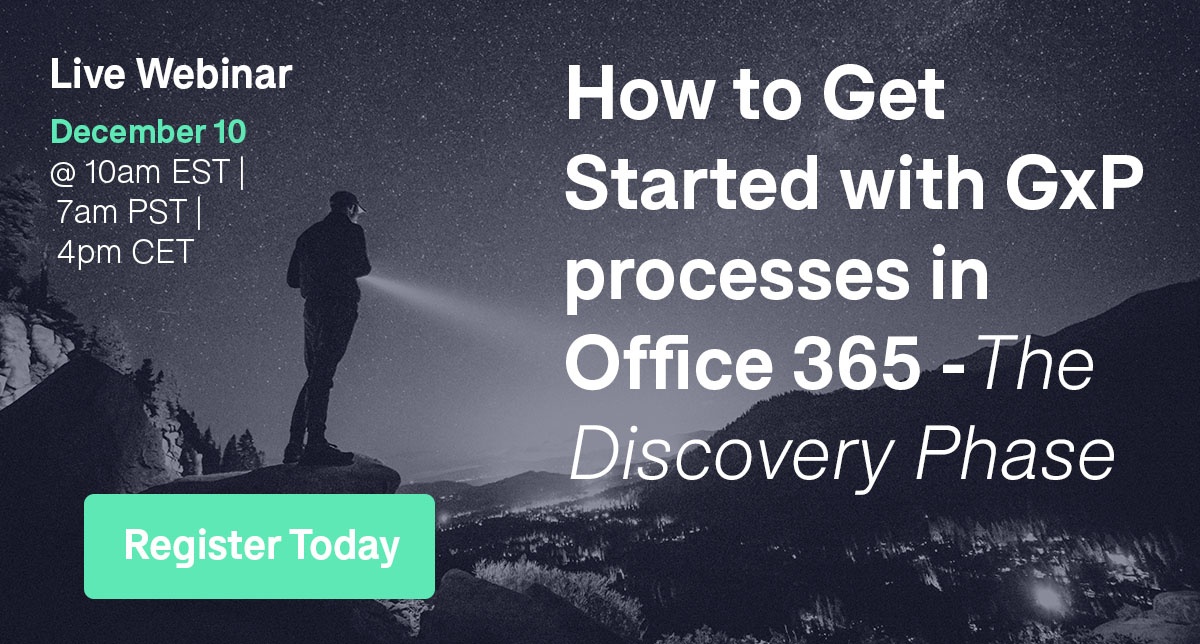Digital transformation in the cloud is here, and technological innovation is speeding up. As a result, businesses are having to form deeper relationships in their leveraging of platforms.
Keeping your business and its GxP processes aligned while branching-out to cloud technology is a challenge that requires more significant strategy and planning, especially with the added complexities of needing to move quickly and with greater flexibility.
Business and technological analyses can’t be lengthy and front-loaded like they used to be. Change management has become more about negotiated forward iteration within timelines of weeks and months instead of singular pushes spanning a year or more.
Thankfully, there is a way to analyze and negotiate one’s position and opportunities in such a way that valuable decisions and strategic execution can play out at a faster rate, and with change becoming much better managed.
You can have a Discovery.
In this first part of a two-part series, we’ll look at what a Discovery is, how to build an energized team relationship, and establish your vision. In the second part, we’ll examine requirements gathering, architecture design and outputs.
What is a Discovery?
A Discovery is a lighter change inception and business analysis method that prioritizes Vision, Relationships and Value Delivery. It invites people to work together and agree on a business's situation, context and opportunities so that the next immediate deliveries are value-driven, risk-mitigating, and can be brought to market sooner without losing one’s footing.
The Discovery approach enables an organization to remain aligned with broader strategic goals, but with less rigidity so that it can more adeptly participate in a market's shifts and technological innovations (or even drive them).

How does having a Vision help?
The first step in ensuring a successful Discovery is the negotiation and agreement of a Vision. Having a Vision serves to align and energize a group of people towards a common goal that is easy to communicate, easily understood, in which the value of a collaborative effort is immediately apparent to stakeholders and the executive strategy of the organization.
A Vision aligns and energizes people
People work better together when they know on the tip of their tongues precisely what change is coming and for what benefit. Performance and quality of output through collaboration also increases when people share accountability for the outcome, which is why Visions are the most useful when negotiated and agreed to. When you have multiple people supporting the establishment of a Vision, the success that follows further energizes people to continue their excellence together. The stewardship of a Vision carries it forward to implementation once it's time.
It's important to align people and goals when seeking to utilize Office 365, given its networked and collaborative nature, a broad array of features, and elasticity with architecture. When working with an on-demand and self-service platform, people can begin pulling it into different directions and risk a loss of cohesion and potential for return on investment. Only by aligning everyone to a Vision for the cloud will the best results be achieved.
Value delivery agreement
A Vision is also an effort to create a hierarchy of value potential (for the business, its customers, and stakeholders) that prioritizes delivery of the highest value that mitigates the most risk. With this defined, the iterative implementation plan and cumulative delivery that follows is immediately valuable with its earliest parts. So, if there is a sudden market or technological shift, there is already an established gain in the road. It’s insulation against loss.
Digital transformations involve a lot of moving pieces. It's not just a matter of choosing a destination and mobilizing change ad-hoc from a traditional top-down perspective that directs people to adhere to singular ideas; that won’t weather change. The opposite of a free bottom-up bubbling of adoption that risks creating pathways that might not merge at the end isn’t ideal either.
There is a middle road. Negotiating for value and risk mitigation across a group of people and interests will help you form an agreement that moves forward iteratively with a higher frequency of points of inspection and alignment-checks (with a Vision). You can then bring your business assets and processes into Office 365 in a way that is aligned and known to have value in a distributed fashion across all levels.
The vision is usually captured within a document (at minimum) as a Problem Statement, Context Diagram, and MVP (Minimum Viable Product) with the names of the people who agree on it. But if the opportunity is smaller, it can be lighter and expressed as a mind map. The key is to understand needs and opportunities and to agree upon them independent of the capture method.
The Takeaway
A Vision is not a contract as much as a living promise to check-in, consider, and move forward together with thoughtful cost and scope control. Use your Vision document to guide your team during the transition from your current system to Office 365 cloud services. That way, you’ll be able to drive GxP processes and consistently bring value to your organization with Office 365.
In Part 2 of this article, we describe other Discovery sessions like requirements gathering and architecture design.





